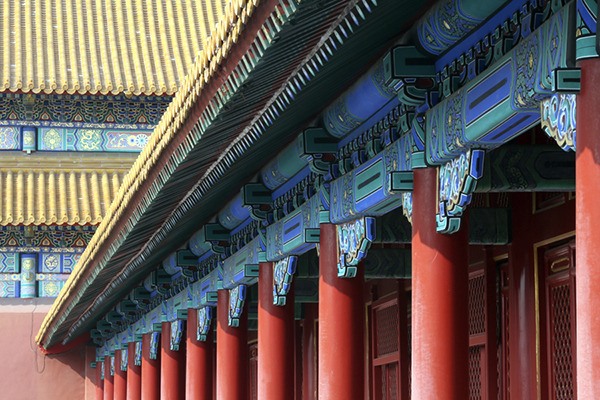By Daniel Green
For The Beachcomber
One year ago, Ray Pfortner, his wife Nancy Wing and 13 other photographers and artists set out to China to capture the aesthetic beauty of a both ancient and modernized culture.
The artists shot photos and explored both urban and rural settings from dawn until dusk for days, until they returned to America with over 125,000 images.
One year later, their photographs printed on beeswax and matted watercolors hang in a Chinese studies classroom at South Seattle College, adjacent to a traditional Chinese garden.
Pfortner and Wing had led a successful “cultural exchange” with the support of islander Jitka Wong and her organization WTE, Inc., which aims to connect American professionals with their Chinese counterparts. More than a simple photography trip, the exchange aimed to immerse the group in Chinese culture.
This bold, artistic venture took the couple and their counterparts across China: Beijing, Hangzhou, Shanghai, Suzhou and Tongli, specifically.
The team even had a chance to talk with China’s leading stock photo agency and meet Xi Zhinong, China’s foremost wildlife photographer.
A number of other Chinese photographers and galleries made appearances throughout the trip as well, undoubtedly lending inspiration and guidance to the Americans.
Of course, the artists didn’t print all of the six figures-worth of photos, but rather narrowed the mass of pictures down to a final 30.
Inside the dimly lit, surprisingly bland classroom, the prints of peaceful Chinese scenes seemed all the more chilling and eerie. Some were characterized by a darker, even foggier, composition.
But upon closer inspection, each work elicited a veritable, unique emotion.
An image of a river reflecting a hazy, unreasonably-orange sky seemed ominous, while a different landscape photo of lush, green hills meeting a bright blue slice of water aroused awe with its startling beauty.
A picture of a cloak-clad, shaved man bowing his head outside a pair of carved doors was solid evidence of a preserved culture.
One photo of the sun peeking over the Great Wall backed by a pinkish-gray, clouded sky evoked a sense of adventure. In fact, Pfortner and his team had extralegally snuck onto the wall to capture such a shot.
After the trip officially came to an end, Pfortner, Wing, three of her siblings and two other photographers stayed in China to capture one last piece of history.
A first-generation Chinese American, Wing had close ties to the area of Kaiping, south of Guangzhou. Her parents had emigrated to America prior to raising 11 children and left behind a now coveted Diaolou house.
In a fusion of Eastern and Western architecture, the Diaolous were constructed with the money earned by Chinese men who had emigrated to areas like Australia and North America. Influenced by the cultures of these faraway lands, the builders of the Diaolous incorporated a range of architectural styles.
Some of the Diaolous are reminiscent of a European or Moroccan castle, Pfortner described.
Pfortner, Wing, and the others returned to the Wing family’s old Diaolou to photograph it meticulously before returning to America.
To Pfortner’s surprise, the Diaolou was in remarkable condition, better, he said, than most others, which are actually protected by UNESCO.
Regardless of condition, the Diaolou provided a destination heavy with sentimental value, a real connection between the photographers and the country.
Wing and Pfortner even cleaned and staged the house before photographing it a second time, an intimate interaction that would have been rare at their other stops.
Possibly the most evocative photo in the exhibition is one taken by Wing in her family’s Diaolou.
The photo displays a variety of ornate, ceramic pots and jars sitting on a two-storied, worn wooden shelf. Light from a nearby window is cast on the white, concrete wall behind the shelf and across a faded floor that appears to have carried the weight of feet for years.
The image may seem exotic or alien, but its worn-in, household simplicity could be a nostalgic reminder of anyone’s home.


